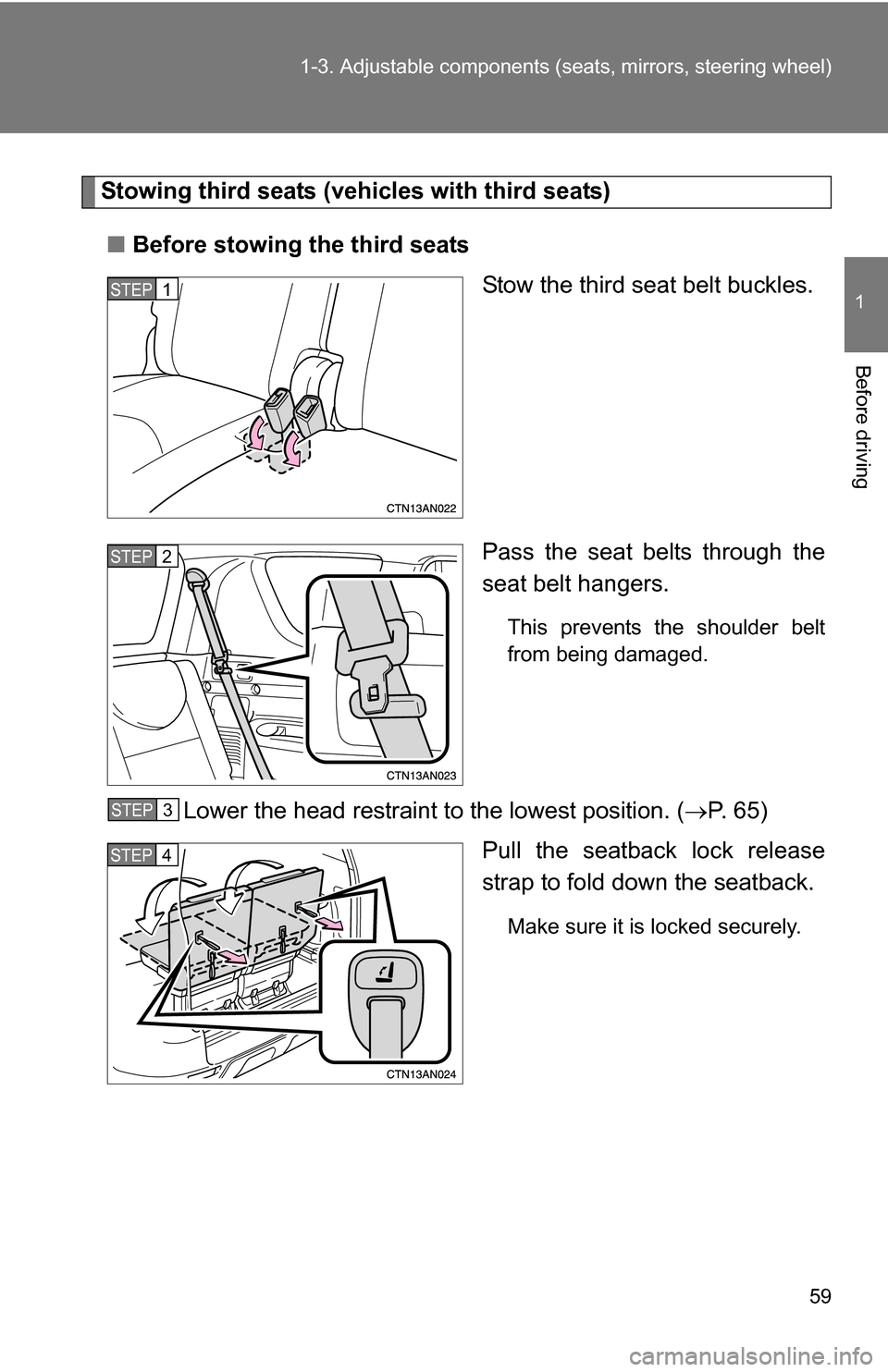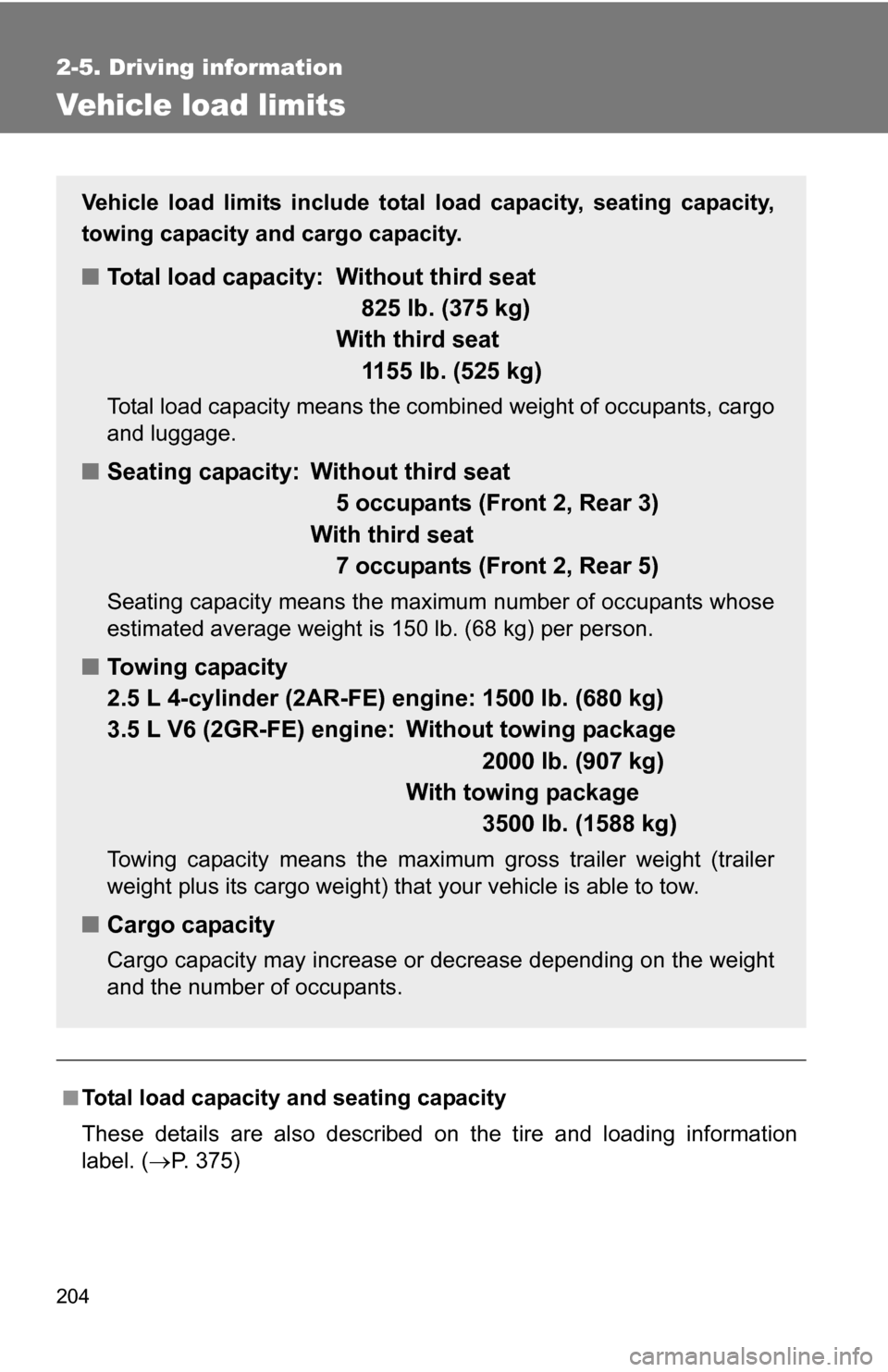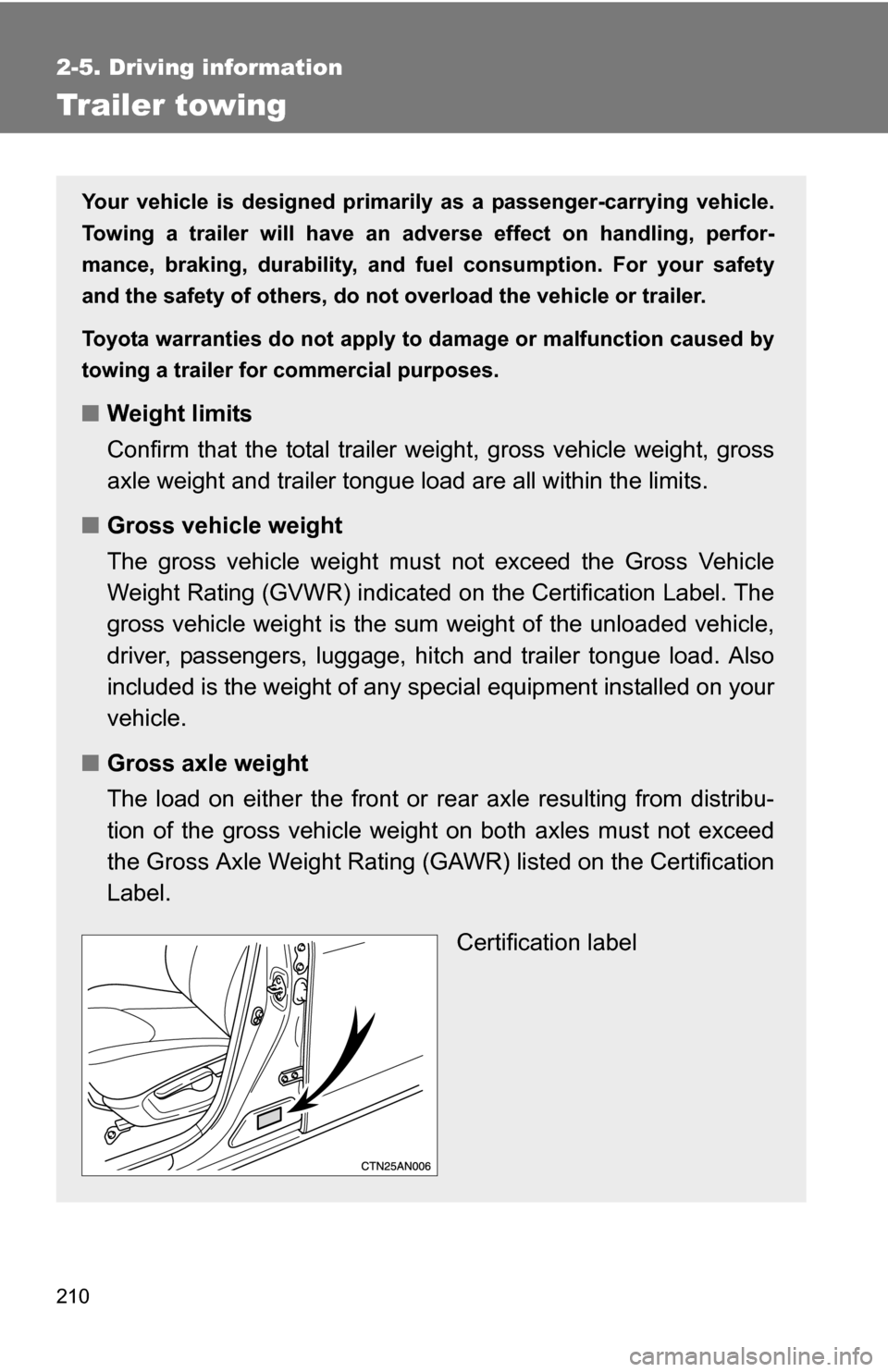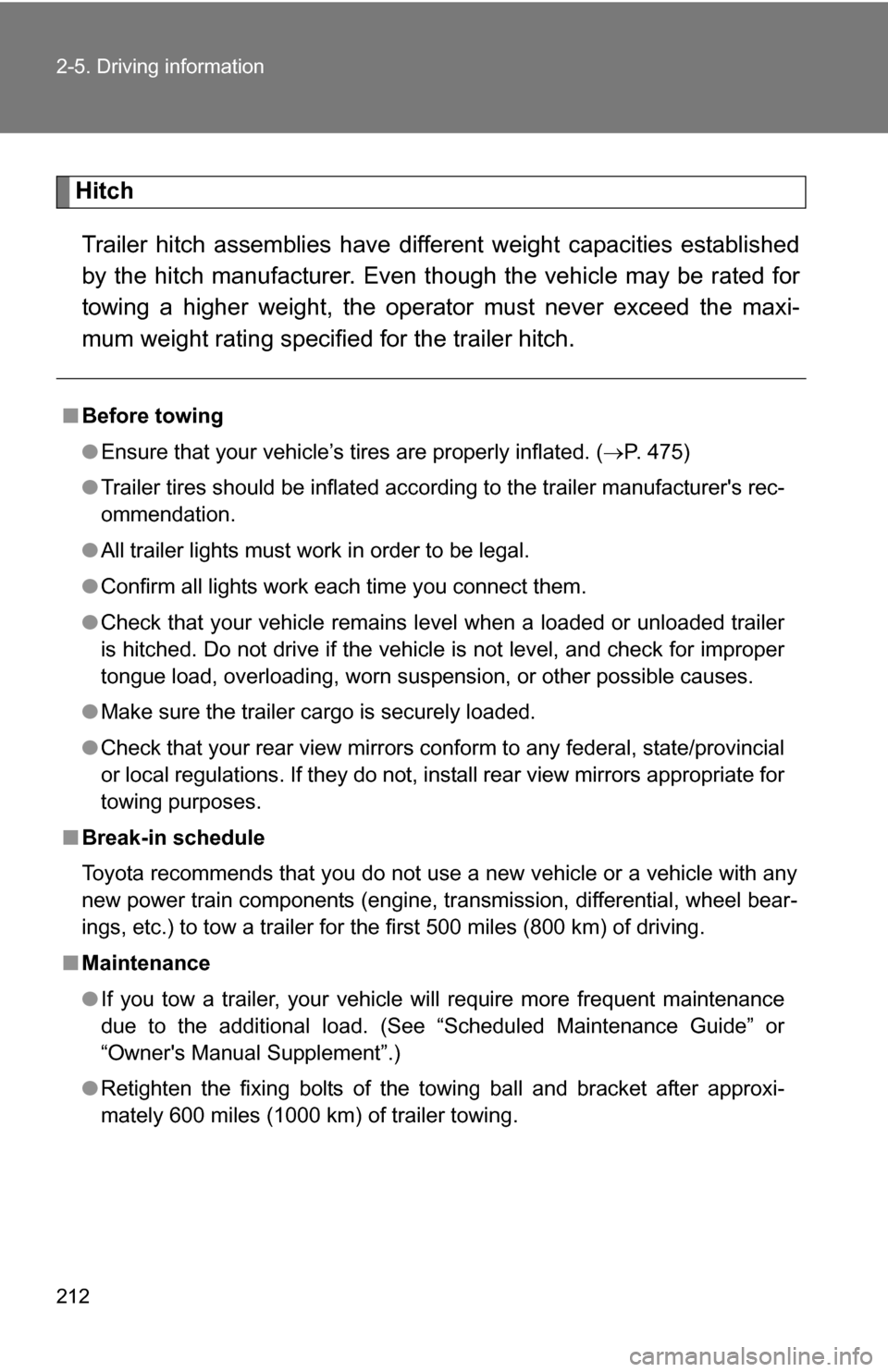towing TOYOTA RAV4 2009 XA30 / 3.G Owners Manual
[x] Cancel search | Manufacturer: TOYOTA, Model Year: 2009, Model line: RAV4, Model: TOYOTA RAV4 2009 XA30 / 3.GPages: 516, PDF Size: 10.61 MB
Page 3 of 516

1
2
3
4
5
6
7
3
2-3. Operating the lights and wipers
Headlight switch .................. 165
Fog light switch ................... 168
Windshield wipers and washer .............................. 169
Rear window wiper and washer .............................. 171
2-4. Using other driving systems Cruise control ...................... 172
Rear view monitor system .............................. 175
Driving assist systems ........ 180
Hill-start assist control ......... 187
Downhill assist control system .............................. 189
Four-wheel drive lock switch ................................ 192
2-5. Driving information Utility vehicle precautions ... 193
Cargo and luggage ............. 198
Vehicle load limits................. 204
Winter driving tips ............... 206
Trailer towing ...................... 210
Dinghy towing ..................... 218 3-1. Using the air conditioning
system and defogger
Manual air conditioning system .............................. 220
Automatic air conditioning system .............................. 225
Rear window and outside rear view mirror
defoggers ......................... 233
Windshield wiper de-icer .... 235
3-2. Using the audio system Audio system types ............ 236
Using the radio ................... 239
Using the CD player ........... 245
Playing back MP3 and WMA discs ....................... 252
Optimal use of the audio system .............................. 259
Using the AUX adapter....... 262
Using the steering wheel audio switches.................. 263
3-3. Using the hands-free phone system (for cellular phone)
Hands-free phone system (for cellular phone)
features ............................ 266
Using the hands-free phone system
(for cellular phone) ........... 270
Making a phone call ........... 278
Setting a cellular phone ...... 284
Security and system setup ................................ 289
3Interior features
Page 59 of 516

59
1-3. Adjustable components (s
eats, mirrors, steering wheel)
1
Before driving
Stowing third seats (vehicles with third seats)
■ Before stowing the third seats
Stow the third seat belt buckles.
Pass the seat belts through the
seat belt hangers.
This prevents the shoulder belt
from being damaged.
Lower the head restraint to the lowest position. ( P. 65)
Pull the seatback lock release
strap to fold do wn the seatback.
Make sure it is locked securely.
STEP 1
STEP 2
STEP 3
STEP 4
Page 60 of 516

60 1-3. Adjustable components (seats, mirrors, steering wheel)
■Stowing third seats
Pull and hold the seat lock
release strap and lift up the seat
rearward and then push the seat
down.
Push the seat on the front side
against the floor and push the
seat on rear side against the
floor.
Make sure it is locked securely.
STEP 1
STEP 2
Page 63 of 516

63
1-3. Adjustable components (s
eats, mirrors, steering wheel)
1
Before driving
CAUTION
■When folding second seats
●Do not fold the second seatback when passengers sit or luggage is placed
on the seat.
● Do not allow passengers to ride on the folded seat or in the luggage com-
partment while driving.
● Make sure that no passengers or luggage are on the rear seats.
● Make sure the seatback is securely locked by pushing forward and rear-
ward on the top of the seatback.
Failure to do so will prevent the seat belt from operating properly.
■ When stowing third seats
●Make sure that no passenger or luggage are on the seats. Then, hold the
seat and slowly move it.
Otherwise, people may be injured or luggage may be damaged if the seat
hits them.
● Make sure the seat is securely locked by pushing forward and rearward on
the top of the seatback or by trying to pull up the edge of the bottom cush-
ion.
Failure to do so will prevent the seat belt from operating properly.
● Make sure the seat belts are not twisted or caught in the seatback and are
arranged in their proper position ready for use.
● Do not stow or return the seats when you are inside the vehicle in order to
prevent pinching your hands or feet in the seat.
Be sure to stow and return the seats from outside the vehicle.
Page 133 of 516

When driving2
133
2-1. Driving proceduresDriving the vehicle............ 134
Engine (ignition) switch (vehicles with smart
key system).................... 143
Engine (ignition) switch (vehicles without smart
key system).................... 147
Automatic transmission .... 150
Turn signal lever .............. 153
Parking brake ................... 154
Horn ................................. 155
2-2. Instrument cluster Gauges and meters ......... 156
Indicators and warning lights .............................. 159
Trip information display .... 162
2-3. Operating the lights and wipers
Headlight switch ............... 165
Fog light switch ................ 168
Windshield wipers and washer ........................... 169
Rear window wiper and washer ........................... 171 2-4. Using other driving systems
Cruise control ................... 172
Rear view monitor system ........................... 175
Driving assist systems ..... 180
Hill-start assist control ...... 187
Downhill assist control system ........................... 189
Four-wheel drive lock switch ............................. 192
2-5. Driving information Utility vehicle precautions .................... 193
Cargo and luggage .......... 198
Vehicle load limits ............ 204
Winter driving tips ............ 206
Trailer towing ................... 210
Dinghy towing .................. 218
Page 200 of 516

200 2-5. Driving information
(6) If your vehicle will be towing a trailer, load from your trailer will be
transferred to your vehicle. Consult this manual to determine how
this reduces the available cargo and luggage load capacity of your
vehicle.
Example on your vehicle
Cargo capacity
Total load capacity
When 2 people with the combined weight of 366 lb. (166 kg) are
riding in your vehicle, the ava ilable amount of cargo and luggage load
capacity will be as follows:
Without third seat
Total load capacity: 825 lb. (375 kg)
825 lb. - 366 lb. = 459 lb. (375 kg - 166 kg = 209 kg)
With third seat
Total load capacity: 1155 lb. (525 kg)
1155 lb. - 366 lb. = 789 lb. (525 kg - 166 kg = 359 kg)
In this condition, if 3 more pa ssengers with the combined weight of
388 lb. (176 kg) get on , the available cargo and luggage load will be
reduced as follows:
Without third seat
459 lb. - 388 lb. = 71 lb. (209 kg - 176 kg = 33 kg)
With third seat
789 lb. - 388 lb. = 401 lb. (359 kg - 176 kg = 183 kg)
Page 204 of 516

204
2-5. Driving information
Vehicle load limits
■Total load capacity and seating capacity
These details are also described on the tire and loading information
label. (P. 375)
Vehicle load limits include total load capacity, seating capacity,
towing capacity and cargo capacity.
■ Total load capacity: Without third seat
825 lb. (375 kg)
With third seat
1155 lb. (525 kg)
Total load capacity means the combined weight of occupants, cargo
and luggage.
■Seating capacity: Without third seat
5 occupants (Front 2, Rear 3)
With third seat
7 occupants (Front 2, Rear 5)
Seating capacity means the maxi mum number of occupants whose
estimated average weight is 150 lb. (68 kg) per person.
■ Towing capacity
2.5 L 4-cylinder (2AR-FE) engine: 1500 lb. (680 kg)
3.5 L V6 (2GR-FE) engine: Without towing package
2000 lb. (907 kg)
With towing package 3500 lb. (1588 kg)
Towing capacity means the maximu m gross trailer weight (trailer
weight plus its cargo weight) that your vehicle is able to tow.
■Cargo capacity
Cargo capacity may increase or decrease depending on the weight
and the number of occupants.
Page 210 of 516

210
2-5. Driving information
Trailer towing
Your vehicle is designed primarily as a passenger-carrying vehicle.
Towing a trailer will have an adverse effect on handling, perfor-
mance, braking, durability, and fu el consumption. For your safety
and the safety of others , do not overload the vehicle or trailer.
Toyota warranties do not apply to damage or malfunction caused by
towing a trailer for commercial purposes.
■ Weight limits
Confirm that the total trailer weight, gross vehicle weight, gross
axle weight and trailer tongue load are all within the limits.
■ Gross vehicle weight
The gross vehicle weight must not exceed the Gross Vehicle
Weight Rating (GVWR) indicated on the Certification Label. The
gross vehicle weight is the sum weight of the unloaded vehicle,
driver, passengers, luggage, hitch and trailer tongue load. Also
included is the weight of any sp ecial equipment installed on your
vehicle.
■ Gross axle weight
The load on either the front or rear axle resulting from distribu-
tion of the gross vehicle weight on both axles must not exceed
the Gross Axle Weight Rating (GAWR) listed on the Certification
Label.
Certification label
Page 211 of 516

211
2-5. Driving information
2
When driving
Towing a trailer
Contact your Toyota dealer for further information about additional
requirements such as a towing kit, etc.
■ Trailer tongue load
The trailer cargo load should be distributed so that the tongue
load is 9 to 11% of the total trailer weight, not exceeding the
maximum load of the following. (Tongue load / Total trailer
weight x 100 = 9 to 11%)
2.5 L 4-cylinder (2AR-FE) engine: 150 lb. (68 kg)
3.5 L V6 (2GR-FE) engine
Without towing package: 200 lb. (90 kg)
With towing package: 350 lb. (158 kg)
The total trailer weight and tongue load can be measured with
platform scales found at high way weighing stations, building
supply companies, trucking co mpanies, junk yards, etc.
Total trailer weight
Tongue load
Page 212 of 516

212 2-5. Driving information
HitchTrailer hitch assemblies have different weight capacities established
by the hitch manufacturer. Even th ough the vehicle may be rated for
towing a higher weight, the operat or must never exceed the maxi-
mum weight rating specified for the trailer hitch.
■ Before towing
●Ensure that your vehicle’s tires are properly inflated. ( P. 475)
● Trailer tires should be inflated according to the trailer manufacturer's rec-
ommendation.
● All trailer lights must work in order to be legal.
● Confirm all lights work each time you connect them.
● Check that your vehicle remains level when a loaded or unloaded trailer
is hitched. Do not drive if the vehicle is not level, and check for improper
tongue load, overloading, worn suspension, or other possible causes.
● Make sure the trailer cargo is securely loaded.
● Check that your rear view mirrors conform to any federal, state/provincial
or local regulations. If they do not, install rear view mirrors appropriate for
towing purposes.
■ Break-in schedule
Toyota recommends that you do not use a new vehicle or a vehicle with any
new power train components (engine, transmission, differential, wheel bear-
ings, etc.) to tow a trailer for the first 500 miles (800 km) of driving.
■ Maintenance
●If you tow a trailer, your vehicle will require more frequent maintenance
due to the additional load. (See “Scheduled Maintenance Guide” or
“Owner's Manual Supplement”.)
● Retighten the fixing bolts of the towing ball and bracket after approxi-
mately 600 miles (1000 km) of trailer towing.